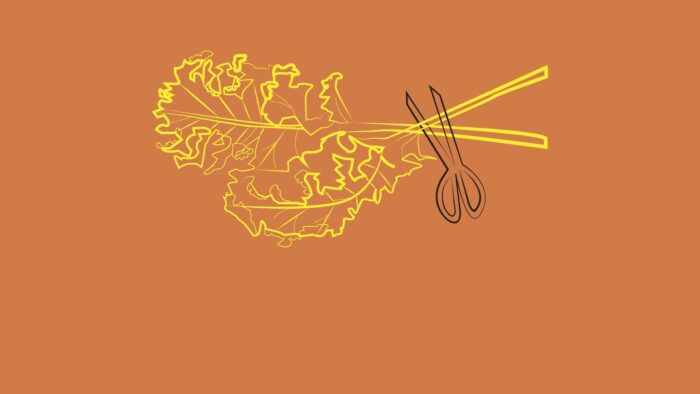
In turn, we use cookies to measure and obtain statistical data about the navigation of the users. You can configure and accept the use of the cookies, and modify your consent options, at any time.
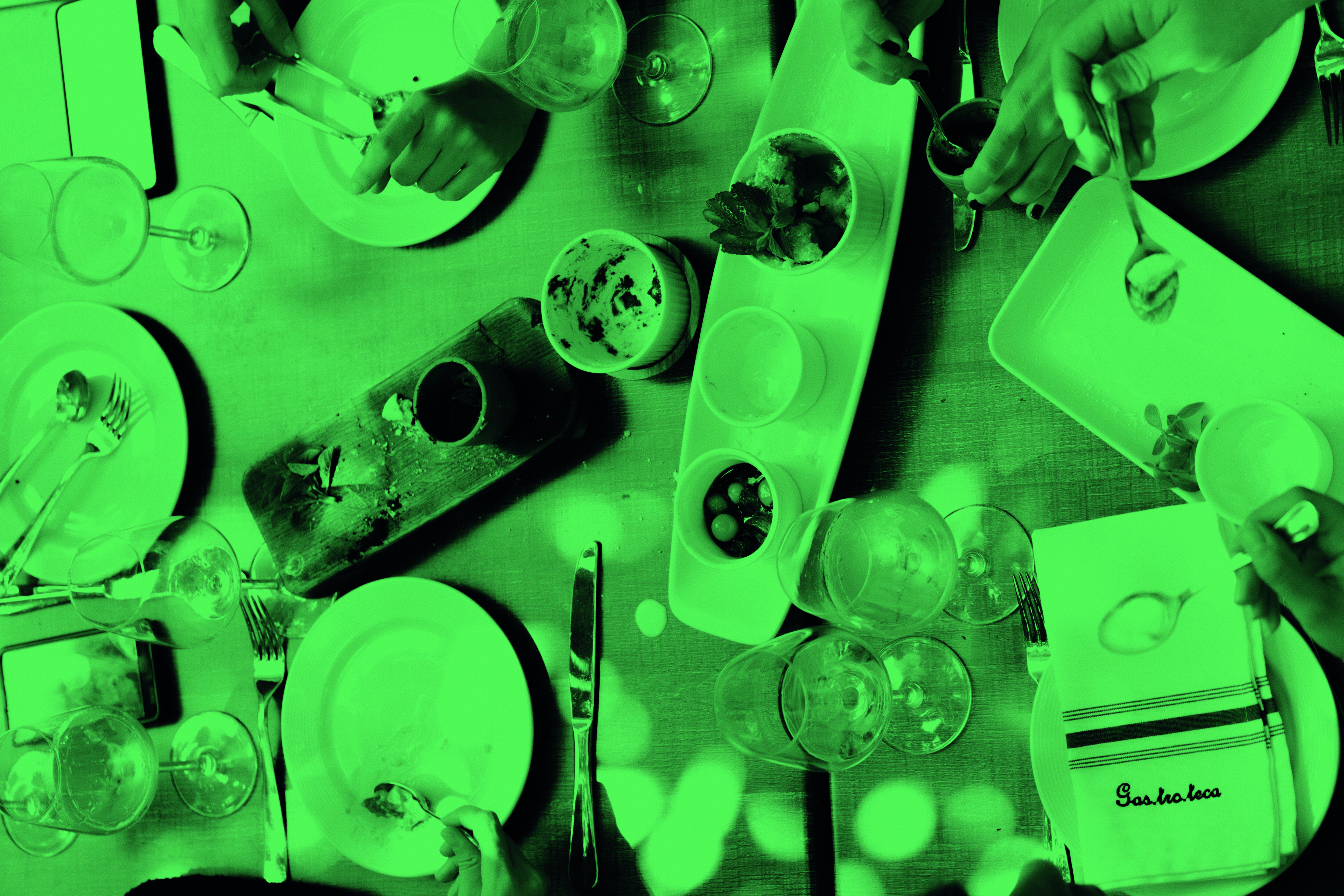
High Brow, Low Blood Sugar
On the ‘lipstickification’ of urban gastronomy.
Image: Coco Hache
Picture this: You and a handful of friends spend the evening at a dimly lit, stylish downtown eatery. The plunky electronic music a decibel too loud, the seating situation a tad too snug, the barren flower decor an inch too close to the candle to keep yourself from side-eying it – in the name of cosiness, you accept. Every so often, the ridiculously attractive server visits to interrupt the titillating banter that has been slipping further into euphoric profanity with every sip of the sour- and pleasantly fermented-tasting orange wine. A split-second window of silence befalls as you inspect paled, scrawly tattoos that appear screen-printed onto their skin, and tangles of tarnished silver jewellery, snaking their wrist, neck, and fingers. Trembling with charm, charisma, and slight embarrassment, the blushed intruder’s voice singsongs you through glistening compositions of vegetables, meticulously sculpted and draped atop of plates so scarcely filled you see more glazed ceramics than you do nutrients. A moist, delicious vapor ascends from their centres.
Home-grown, house-made, hand-picked, herb-sprinkled displays of beetroot, carrots, and asparagus; of white fish, mushrooms, and artichoke; of hummus, parsnip, and potatoes. Like petite still life paintings in thick frames. You hold their gaze as they glide downward, with the grace of swallows, from the server’s hands to the flat landing below, encircled now by the near-penetrative glare of salivating spectators. Seared, sizzled, and steamed. Simmered, sun-dried, and stir-fried. Ornaments of local origin deck the surface before you, shyly forked and fingered, grabbed, and gashed at from every corner of the table. A curious “mmm” here, a surprised “mmm” there, a sensual if not obscene “mmm” elsewhere – lids shut, heads tilted skyward. Barely emptied of their contents, the flying saucers flock off again, ushered backstage, off into the kitchen. “Ah, what have we here? Could it be? Not possibly,” you joke, as a pristinely white orb of burrata sails into harbour, elegant as a blimp, polka-dotted with grains of fresh pepper, crunched and ground, raining from above your midst like flakes of black snow. The drizzle of olive oil, the tang of balsamic vinegar, the crystalline Fleur de Sel – soon there is but an idle shred of green- and brown-stained membrane left, untouched yet so desired. Tipsy chatter aloud thereafter, a syrupy, piping-hot espresso pours down your throat.
The sum is split, the check is paid, the server tipped, and your group dazedly buoys out the door, into the cool night, happy but nauseous from too much booze and too little to eat. Saying your goodbyes and see-you-soons, you notice a wound: you hurt your gums on a crusty, half-moon-shaped slice of sharp-edged sour dough bread that now bobs back and forth in your stomach, like a spongey canoe soaked in a soup of remnants. Sardines, olives, lemon-peel-garnished sage butter – all afloat in the acidic whirlpool of an elderflower-rosemary-gin cocktail you sloshed down mere moments ahead of departure. Skipping homeward, reflecting, you chuckle in amusement and self-pity, thinking of that Dolly Parton quote: “It costs a lot of money to look this cheap,” she once said. “It costs a lot of money to leave a restaurant this hungry,” you think…
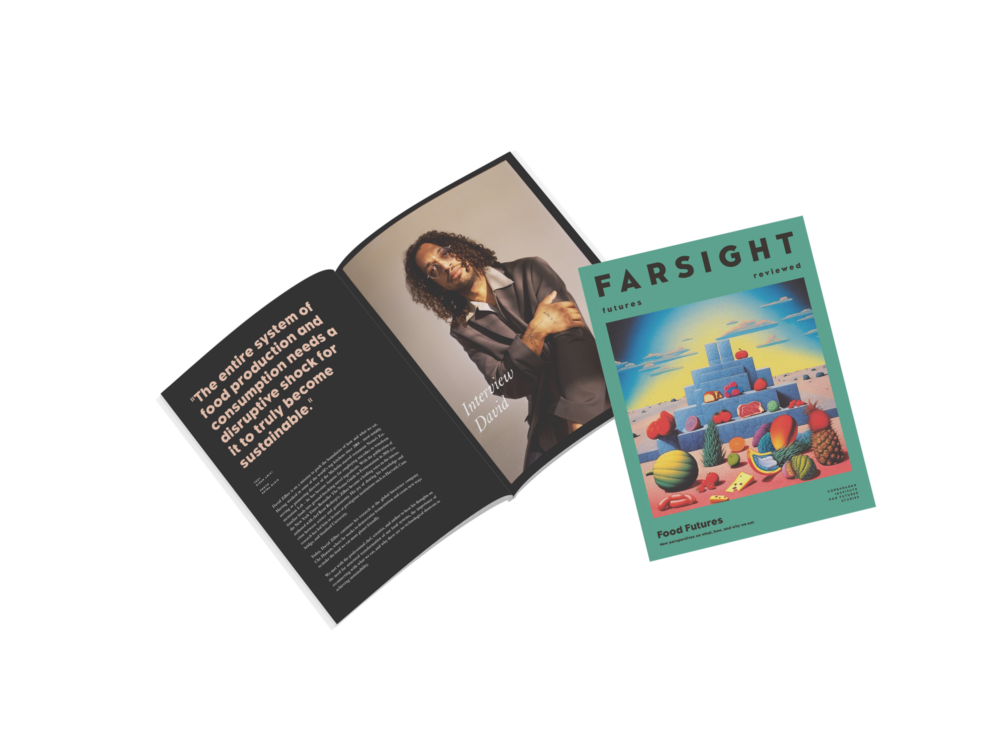
Broaden your horizons with a Futures Membership. Stay updated on key trends and developments through receiving quarterly issues of FARSIGHT, live Futures Seminars with futurists, training, and discounts on our courses.
become a futures memberPeople enjoy nice things, even or especially when economic uncertainty threatens their finances and aspired lifestyles. In 2001, after revenues had surged in the wake of 9/11, Leonard Lauder of the Estée Lauder cosmetics empire coined this the Lipstick Effect: our tendency to reward ourselves with little luxuries during times of economic hardship. It seduces consumers – and has done so repeatedly, provenly, throughout history – to buy finer than necessary or rational goods. The lipstick represents the literal and metaphorical embodiment of smaller, sentimental splurges on products that serve an emotional, consoling, temporarily distracting purpose. Candy, specialty foods or alcohol, fashion, magazines, make up and skin care – the occasional purchase of any of these and more can be umbrellaed under this notion of band-aids for the soul that coddle, entertain, and grant an escape for even just an instant from an otherwise dire reality.
Micro-dining, which emerged in the aftermath of the late 2000s’ Great Recession, is a symptom of this habit. Fast forward to over a decade later, we now find ourselves in post-Covid debris, a war on European grounds, and global inflation in full swing – naturally, micro-dining has never felt so ubiquitous. Its upscale-adjacency is alluring enough to elicit a thrill, yet also affordable enough to allow oneself to partake in it amid a cost-of-living crisis. The gist of its contemporary iteration can be condensed to the following: Under the guise of providing customers with an artisanal, multi-sensory dining experience, restaurants of whichever culinary strand – the newer the likelier – are opting away from regular entrées and pivoting toward tapas-esque menus of tiny dishes. Often in shape of a predetermined palette of diverse, domestic delicacies, they are to be enjoyed gradually, collectively, more so than individually.
Jewel-tone vial-vases, muted linen rags, conversation-hijacking staff, and quick photoshoots between courses aside, there is far more to examine here than personal memories of the pitiful last bits and pieces of servings that everyone was too polite to claim. Or the awkwardly unspoken dissatisfaction over how everyone present just rid themselves of precious coin to now have to devour a frozen pizza. By their lonesome. In bed. Because the expanse of the cultural cachet of what has semi-lovingly, semi-ironically been dubbed Stracciatella Restaurants – in reference to the oozy blob of dairy these often disyllabic, often minimally furnished establishments are so obsessed with – is as big as the expense of indulging in them. Rich as the signature mozzarella, these tendencies become a stringy, subtextual prism of industry implications.
Call it democratic haute cuisine, or a manifestation of an environmentally attuned Experience Economy: after months of isolation, consumers are as interested in the physical product or service they are investing in as they are in the more intangible compounds that accompany and underpin it. The metrics of value are evolving to further encompass not just the de-facto quality of a good, but also the immaterial quality of the messaging, backstory, legacy, presentability, or impact it comes with. In the context of micro-dining, food is more than just a means to nourish and energise a body. It is a virtue, a belief structure, and a codified system of symbols in relation to politics, morality, community, and affluence.
Fashion’s Quiet Luxury movement could be viewed as a corresponding case in point to further exemplify a current, potentially way-paving zeitgeist that prefers – performatively, at least – restraint over maximalism. Here, an insider’s if-you-know-you-know mentality compensates for a lack of shrieking statements, swapping flashy logos, bold colours, and lavish silhouettes for a simplistic capsule wardrobe. So, garments so visually boring you must either be smart or wealthy enough to decrypt and wield their signals. It’s the type of design only the worthy can appreciate for its craftsmanship and inconspicuous exclusivity. Hence, the sought-after benefit pertains far more to the perceived attitude and intellect associated with the items in question, and to the evocation of anti-excess ideals instilled in them, than to any baseline practical intent. Sounds familiar, no?
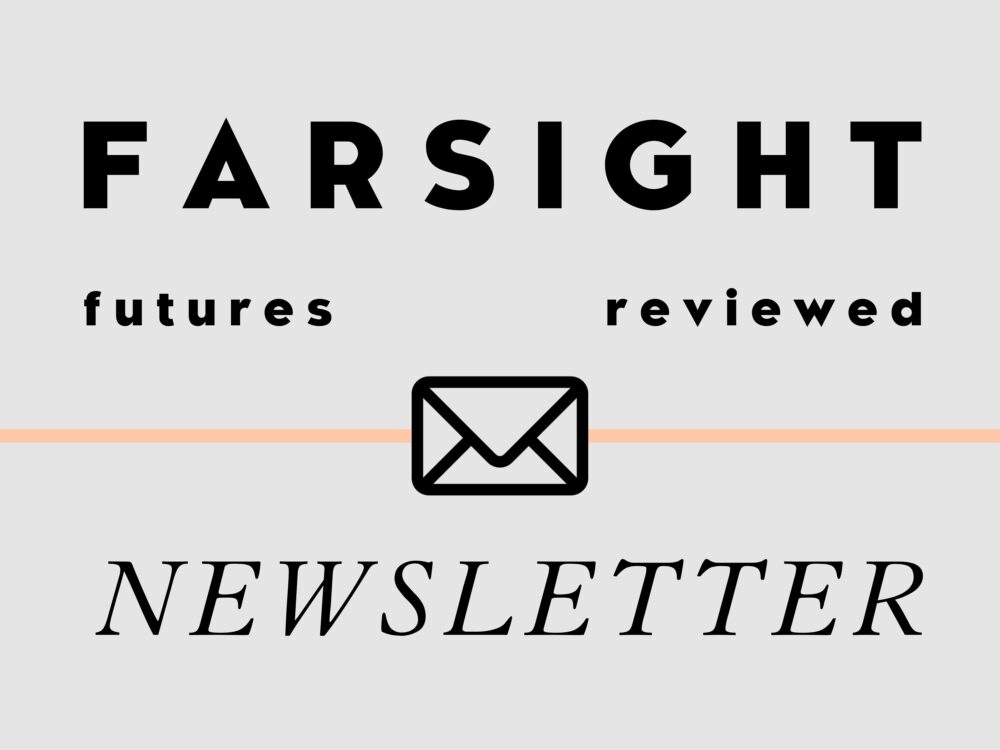
Explore the world of tomorrow with handpicked articles by signing up to our monthly newsletter.
sign up hereThe aesthetic commodification of what, how, where or with whom we eat is nothing new. But what incentivises a future-facing investigation of this variant of it, is that today’s micro-dining sits at a threefold intersection of industry, ideology, and leisure. While a prerequisite for its popularisation is, in fact, a volatile economic backdrop, it simultaneously caters to timely reconsiderations of personal behaviour, as well as cross-channel projections of a nouveau mindfulness. Whether clear or unbeknownst to them, consumers relish in what are ultimately circumstantial whims, and do so in delight, communicating to both URL and IRL peers just how en-vogue they truly are.
Regardless of how profound guests’ convictions really are, micro-dining is more than the escapist, pseudo-glamorous, and camera-friendly social activity that it is sometimes cynically characterised as. It reflects society’s in-flux relationship with food, its intake, and the expectations and wishes attached. As such, its traction aligns with soaring demand for, and future opportunities in hyper-individualised, innovative, ethical modes of consumption: wellbeing wearables, customized dietary regimens, supply chain transparency, et cetera. It reasonably indicates and underscores acute shifts relevant to all ends of gastronomy, the food sector at large, and every inter-actor, inter-tier dynamic at play here.
Obviously, food is not unlike other objects exchanged under capitalist parameters – easily leveraged as an instrument for status. Lucky for Planet Earth though, it seems that what just so happens to be an enviable code of conduct these days, is to treat oneself with resourceful recipes and cherish – together, in one picturesque space – the ingenuous efforts, care, and sentiments of regional labour. Somewhat pretentious? Sure. Devoid of depth, burning vigour, and lasting passion? Perhaps. But if to parlay the subdued activism innate to the drivers of this trend and what it foretells requires us to comply with bigger bills, smaller portions, and the inevitability of guest starring in someone’s TikTok video or Instagram story – then maybe some of us will just have to fill up on snacks ahead of our next dinner reservation. Say “Cheeeese!”.
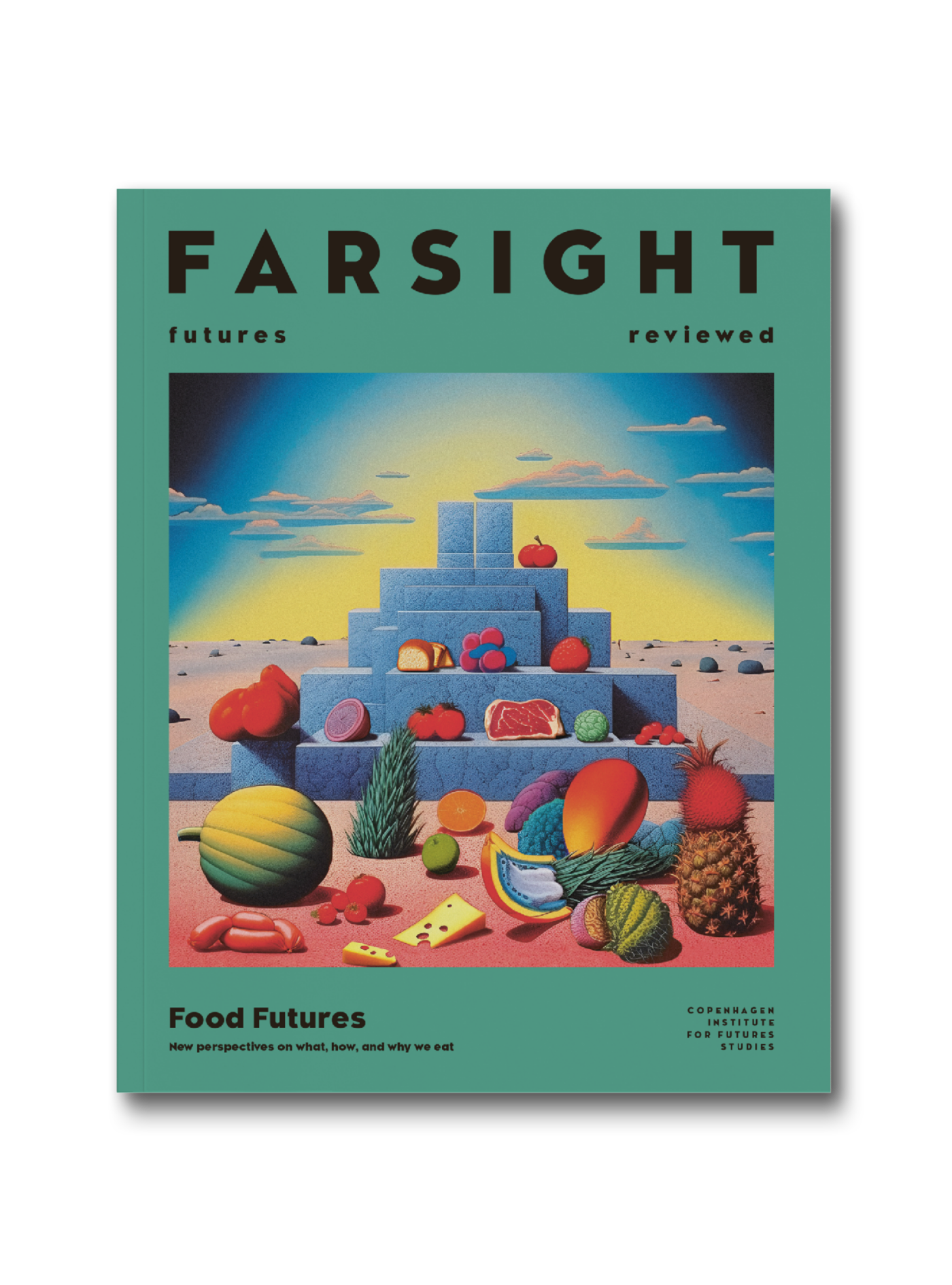
This is an article from our latest issue of FARSIGHT: Food Futures
Grab a copy here